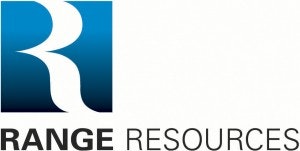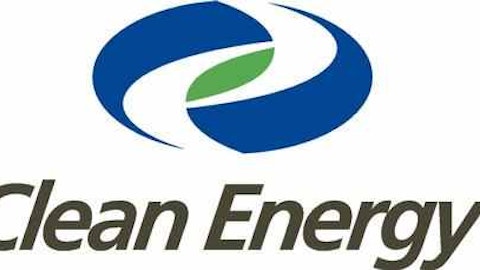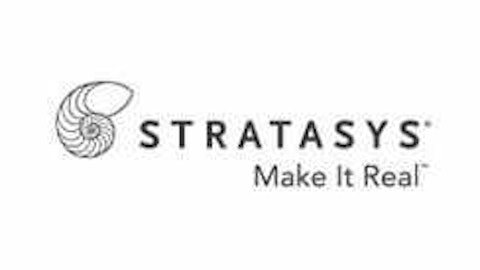
Range Resources Corp. (NYSE:RRC)’ secret sauce is a combination of prolific assets, rigorous cost-benefit analysis, and efficient execution. Range Resources Corp. (NYSE:RRC) has been able to achieve double digit increases in both production and proven reserves every year for the last 6 years while remaining one of the most effective cost control operators.
Why Nat Gas?
The U.S., and much the world, is undergoing a drastic change in energy policy with greater focus on Natural Gas as a utility, and a transportation fuel. Companies, like Westport Innovations Inc. (USA) (NASDAQ:WPRT), are revolutionizing Natural Gas engine technology for the trucking industry. Large distribution companies like UPS have already made significant moves to diversify their trucking fleet with Westport Innovations Inc. (USA) (NASDAQ:WPRT)’s technology. While adoption is in the early stages, companies like Shell and Clean Energy Fuels Corp (NASDAQ:CLNE) continue to build-out their fueling infrastructure creating the framework for Natural Gas to become a viable alternative fuel for an increasing number of companies with long and short haul trucking fleets. Clean Energy Fuels Corp (NASDAQ:CLNE) expects to build-out 150 stations in the U.S. in 2013 alone in an effort to create a “Natural Gas Super Highway.”
Increased use of Natural Gas has become a global story as American E&P companies export their expertise. EOG Resources Inc (NYSE:EOG), another one of the best domestic E&P companies, focuses on both Nat Gas and Oil Shale plays in the US, as well as significant investments in South America and China. China has a stated goal of doubling their use of Natural Gas by 2020 as a utility as well a transportation fuel. Europe and the UK have made significant investments, and India is in the early stages of Natural Gas adoption. The largest and most cost efficient reserves of Nat Gas are in the U.S.
Consider that a barrel of oil contains the energy equivalent of 6 Mcf (thousand cubic feet) of Nat gas and one MCF is now trading at $4.05 per Mcf versus a barrel of oil at $95 per barrel, the equivalent amount of energy for $24. While liquid natural gas (LNG) and compressed natural gas (CNG) vary from the aforementioned price, by any metric both are significantly cheaper (and cleaner) than oil. As Natural Gas continues to replace coal plants, is increasingly adopted as transport fuel, and becomes an export product from North America to Asia and Europe, the price of Natural Gas will continue to increase. It will eventually reach an equilibrium where the economics will still make sense versus oil, and will also be profitable for E&P companies. An investment in Range is an opportunity to be ahead of the curve.
The Marcellus Shale
Range Resources Corp. (NYSE:RRC) has significant properties in the Horizontal Mississippian Basin, the Utica Shale, West Texas, and Pennsylvania. Range sold their stake in the Barnett shale in 2011 for approximately $900 million, strengthening their balance sheet, and providing the funds to concentrate on their higher return assets, especially the Marcellus Shale. Before the sale, the Barnett represented 20% of Range’s total production. Range replaced that loss in production within 5 month of the sale.
Range Resources Corp. (NYSE:RRC) completed their first well in the Marcellus Shale in Pennsylvania in 2004, and the first horizontal well in 2007. It has proven to be one of the most economic and prolific gas shale plays in the world. Through 2009-2012 Range doubled production, and they expect 25+% growth in 2013.
Proven and Unproven Reserves
Range’s production in 2012 was 79% Natural Gas, 15% NGLs, and 6% Crude Oil. Range’s proved reserves as of December 31, 2012 increased 29% YOY to a record high of 6.5 Tcfe. Range estimates that their unproven reserves (44-60 Tcfe) are almost 10 times their proven reserves. That potential combined with a strong balance sheet and low cost structure positions this company to have a long runway of growth and increased profitability as the Natural Gas price rebounds.
Range Resources Corp. (NYSE:RRC) Reported that its Q4 production increased 35% over the prior-year period, with production volumes reaching a record high of 844 Mmcfe per day. Production for FY 2012 averaged 753 Mmcfe per day, a 36% increase over the previous year and represents the company’s ninth consecutive year of double-digit production growth.
Core Competency
Range Resources is a leader in cost control. Maintaining low finding and extracting cost is part of the company culture, as employees at all levels are rewarded with equity for efficiency in that regard. In Q1 2013, Range had record daily production of 876 Mmcfe per day, an increase of 34% over prior-year quarter. They have met or exceeded their production goals every year for the past 5 years. Over the past couple of years, management has focused on strengthening the balance sheet, lowering their debt to capitalization ratio. Cash flow was $219 million, an increase of 34% as compared to the prior-year quarter (despite lower realized prices), including a decline in unit costs as compared to the prior-year quarter.
At Range, each proposed drilling well undergoes a rigorous cost benefit analysis before any funds are committed. In 2011, Range drilled 301 gross wells with a staggering success rate of 99.6%. Consider that Range’s capital Budget for 2012 was virtually the same as 2011, but production rose at a significantly higher rate as they maintain industry low drill bit costs on an annual basis, and continue to be successful in drilling prolific wells.
Range Resources Corp. (NYSE:RRC) also has a strong safety record. They have surpassed more than 1 million man hours worked in the Marcellus Shale with no OSHA reportable incidents. One of the largest costs and environmental risks associated with “Fracking” is water usage and disposal. Range Resources is one of the pioneers in water recycling, which has benefits for both the bottom line and the environment.
Range’s Future
Range is on track not only for 20-25% production growth in 2013 but also for many years in to the future. In 2012, Range was able to navigate a tough market for Nat Gas because of their low cost structure, divestiture of lesser performing assets, and focus on their most prolific assets like the Marcellus shale. They continue to expand their proven reserves. While the Marcellus will continue to be one of their most prolific assets for years to come, many underestimate the potential of their other reserves. By some estimates they might be able to eventually extract 500,000 Barrels on oil per well in the Mississippian. Consider that with the potential of 2,000 wells, there is the potential of a billion barrels of oil in the Mississippian alone. That potential yield is not reflected in their share price. Because of the company’s operational talent, superior assets and a bright future for Natural Gas adoption, Range Resources Corp. (NYSE:RRC) will continue to grow and be one of the stalwarts of establishing America’s energy independence.
The article Range Resources: An Investment in American Energy Independence originally appeared on Fool.com and is written by James Fantaci.
Copyright © 1995 – 2013 The Motley Fool, LLC. All rights reserved. The Motley Fool has a disclosure policy.


